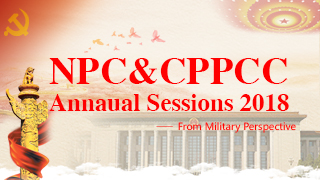
India's Prime Minister, Shri Narendra Modi meeting the President of the People’s Republic of China, Mr. Xi Jinping. Photo Credit: India PM Office.
Source: eurasiareview.com
By IPCS
By Dr Siwei Liu
Sino-Indian relations in 2018 were generally stable and gradually emerged from the shadow of the Doklam crisis. However, issues that will continue to affect the ties have not been completely addressed, especially the mutual trust deficit between the two Asian giants. Looking into 2019, the bilateral ties still have room for improvement, providing both danger and opportunities. Balancing this requires knowledge of these issues as well as the foresight to move relations onto a healthy and positive track.
After the Wuhan Summit China and India not only resumed border negotiations but also a joint military exercise called ‘Hand-in-Hand 2018’ and a maritime dialogue that was originally scheduled for 2017. Moreover the ‘China-India Plus’ cooperation plan was put into action, with the first project being the joint training of Afghan diplomats. The two sides also held their first high-level meeting on law enforcement, security as well as that of the newly constituted Sino-Indian High-Level Mechanism on Cultural and People-to-People Exchanges. All of this happened in the background of counter-globalisation and rising trade protectionism, while the trade volume between two sides has nearly broken through the US$ 90 billion mark.
Based on this background, Sino-Indian relations in 2019 should remain relatively stable. It will however inevitably face various challenges. Given the current mutual trust deficit, any action from either of the two sides in border areas, including infrastructure construction and resource development and utilisation, will raise hackles. In addition, the complex and ever-changing security environment in the Indo-Pacific region will affect the Sino-Indian dynamic. This boils down to how China interprets India’s attitude towards the Quad and especially the US on the one hand, and how India views the evolution of China’s Belt and Road Initiative (BRI) on the other. Predictably, competition between the two countries in the Indo-Pacific region will continue, involving both geopolitics and geo-economics This “keeping up with the Joneses” psychology may be a good thing to some extent and it could encourage each other to do better, but the two countries need to ameliorate the negatives that accrue to their chosen paths. Further, the Indian general election in 2019 may add a further complicating factor, as interpersonal relationships between leaders invariably tend to affect ties.
Tactical issues like the unresolved border will take up much energy and time. The question is how much they taint the need for the two countries to coexist and cooperate in other spheres. For ties to be insulated against such tactical ups and downs, the end goal cannot merely be to ensure stability and conflict avoidance. There should be a higher goal, that is, to jointly meet challenges, share responsibility, and identify areas of win-win cooperation.
A balance can be found if both countries understand that a threat greater than the security dilemma exists, which is the series of dilemmas related to human survival that confront both countries. Survival dilemmas not only involve the arms race, but also environment resource depletion, environmental pollution, and so on. To face these dilemmas, the two countries need to respond with new ideas based on collaboration and sharing. For example, China and India can consider more cooperation on global or regional governance issues. Given the economic slowdown in developed economies, it is unrealistic to expect them to provide more public goods. It is necessary for China and India to work together to make more contributions to transnational challenges such as climate change, environmental pollution, natural disasters and epidemic diseases.
Given that ties are plagued by insufficient mutual trust, it is highly recommended that the two countries conduct a broad and meaningful strategic dialogue in 2019. If possible, the original strategic dialogue mechanism can be upgraded to a new and comprehensive mechanism which invites the joint participation of diplomats and defence officials, where the bridge-building done by the two leaders at Wuhan is institutionalised and tied into a robust process dependency such as turning the Wuhan format into an annual leadership and government summit.
In all, if the two countries respect each other’s core interests and learn from each other’s successful experiences in the process of national development and governance, and carry out more cooperation on global and regional governance issues, Sino-Indian relations in 2019 will be better than they were 2018.

Disclaimer: This article was originally produced and published by eurasiareview.com. View the original article at eurasiareview.com.












